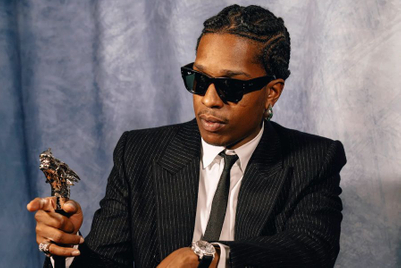
Last month, designer C.J. Yao sent models down the runway at Shanghai Fashion Week with sponge-rubber buckets of fried chicken in their hands and large ‘K’ logos on their chests. Her collaboration with KFC is not only an attempt to freshen up the brand’s image after almost 30 years in China; it’s also a perfect parable for the main problem with the luxury industry, which is projected to grow by just 1 percent this year.
While it once prided itself on elusive, meticulously crafted and bespoke products and services, luxury is increasingly dominated by mass-produced, mass-consumed, throwaway items. And the more lower-tier brands like KFC dabble in luxury offerings, the more the concept of luxury itself loses its meaning. Nowadays, you can buy luxury toothbrushes, luxury toilet paper and luxury cotton buds at the local supermarket. Coupled with recent crackdowns on corruption and conspicuous consumption, luxury is now a dirty word in China.
The future of luxury in China isn’t about the no-logo trend, offering limited editions, or even tapping into Chinese aspirations to discover new cultures and be more cultured. Rather, luxury needs to return to what made it attractive in the first place: offering products that are personalised and exclusive. Ultimately, it’s about greater intimacy in the way products are designed, made and sold.
Rapid growth needs to be revisited
On some streets in Shanghai, luxury brands have more stores than Starbucks. And when LV sells the same items in Urumqi, Xinjiang Province, as it does everywhere else in the world, it’s hard to see how they’re exclusive in any sense other than cost.
Limited editions are one approach to making items feel more exclusive, but they risk suggesting that luxury, like fast food, is disposable. Much like the upgrade-and-discard mentality toward mobile phones, a string of limited-edition offerings tells consumers that these goods are meant to be bought, used and thrown out when a newer edition comes along.
Luxury brands need to create products that connect with their owners more intimately. While brands often allow limited customisation across a number of core features, wealthy consumers are increasingly seeking to engage the design staff at the concept stage. These customers aren’t price-sensitive, making such an approach viable.
The flow can also work in reverse, with designers pitching ideas to top-tier customers on an exclusive basis. These could either be true one-offs or tweaks to products based on past purchases. This approach rebalances the relationship back toward the brand as the customer aspires to be sufficiently valuable to gain preferential access. It’s a big gesture that brands can make to truly drive loyalty and build word of mouth.
Brands also need to create more intimate shopping environments. Shopping in mega malls has become similar to an airport retail or outlet experience. Of course there are VIP sections, but consumers are beginning to look for smaller, niche brands that offer a more intimate and personal retail environment to shop—boutiques that demonstrate they’re in the know.
Make service more unique
Increasingly, Chinese consumers are disappointed when they’re served by their compatriots in Tokyo and Seoul. Just as they travel to experience local lifestyles, they prefer to encounter local service culture. By offering service in Mandarin around the globe, brands just focus people’s attention on the price discrepancy between China and other markets.
Luxury brands should also empower staff in China to do their jobs. How can concierges in five-star hotels earning 4,000 to 5,000 RMB per month be expected to offer advice to top CEOs? With low salaries, little training, and no budget to go and experience luxury first-hand, concierges leave their jobs for slightly more pay without developing the right kind of relationship with a brand and their customers.
Focus on materials
Brands almost universally describe their products as expertly designed and crafted. The word ‘craft’ no longer has any impact, especially as consumers are noticing single stitching, flimsy plastics and thinner cottons appearing.
Companies need to innovate products whose materials demonstrate their worth. By making consumers want to touch and hold their items, they develop a more intimate relationship with them over time. Watch brand Movado, for instance, is about to launch a new collection developed in collaboration with industrial designer Yves Béhar. The Movado Edge uses a new sandblasting technique to create the concave dial, offering a stunningly original new shape and texture.
Online intimacy: It's possible
Luxury brands often view digital activation as an affront to their exclusivity because the Internet is everywhere. But social media and online connections offer luxury brands unprecedented intimacy when relating to consumers.
LVMH now offers real-time information about the arrival of goods and retail stores locations across Asia to its Chinese consumers. The next step is to serve up travel, fashion and beauty inspirations to travellers as they shop in Omotesando or Garasu-gil.
Digital concierges are another opportunity. Standard Hotels has developed an app called Alice, which enables poolside ordering and express checkout. A ryokan in Kyoto has taken digital service to a new level by giving guests an app through which to chat with the concierge wherever they are in the city. And for true VIPs, some brands even offer a direct line of communication to their brand ambassadors. That’s something Johnnie Walker did during a webinar where China’s most famous entrepreneurs answered questions about how they succeeded. Luxury brands have an opportunity to connect people with those they aspire to become and curate content that taps into their target’s desires.
H&M and Uniqlo have large stores in key locations, offer limited edition lines, and pride themselves on service. Luxury brands need to differentiate themselves from these mass-market brands by offering something they can’t: the intimacy that comes with exclusivity.
 Julien Lapka is co-CEO of Flamingo Shanghai Julien Lapka is co-CEO of Flamingo Shanghai |
Main image source: Tummy Friend



+(900+x+600+px)+(3).png&h=334&w=500&q=100&v=20250320&c=1)
+(900+x+600+px).jpg&h=334&w=500&q=100&v=20250320&c=1)
.jpg&h=334&w=500&q=100&v=20250320&c=1)


.jpg&h=334&w=500&q=100&v=20250320&c=1)


+(900+x+600+px).png&h=334&w=500&q=100&v=20250320&c=1)
+(900+x+600+px)+(1).png&h=334&w=500&q=100&v=20250320&c=1)




.jpg&h=268&w=401&q=100&v=20250320&c=1)


